Sponsored by the Office of the Provost, CRLT, and the University Library
Provost's Teaching Innovation Prize home page and nominations
Provost's Teaching Innovation Prize home page and nominations
| Recipient(s) | Title |
|---|---|
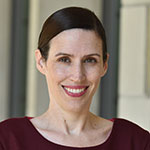 Megan Tompkins-Stange |
Bringing Philanthropy to Life Through Critical PedagogyStudents engage in hands-on grantmaking in PUBPOL 495 “Philanthropic Foundations in the Public Arena.” This experiential learning initiative allows students from all backgrounds to critically reflect on the role money plays in social change as they analyze the historically controversial relationship between institutional philanthropy and public policy. Multiple, and often conflicting, disciplinary perspectives simultaneously challenge students and train them in constructive dialogue and deliberation in order to reconcile conflicting values. Working in teams, the students collectively… more Poster |
| Recipient(s) | Title |
|---|---|
 Sandro Cinti Michael Cole Michelle Daniel Douglas Gelb |
Teaching Early Learners “How Doctors Think” in the Chief Concern CourseThe design of the Chief Concern Course (CCC) takes a whole-task approach to teaching the complex skill of clinical reasoning to first-year medical students. The curriculum guides the students through increasingly complex cases and emphasizes prompt feedback on the performance of learning tasks, just-in-time information and resources, and opportunities to practice recurring procedures until they become automatic. Each case begins with a “chief concern,” a patient’s main reason for seeking care. Cases horizontally integrate content from students’ science courses, but discourage overly… more Poster |
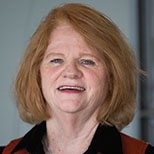 Mary Lou Dorf |
Inspiring Confidence Through Achievement: Inclusive Teaching in Computer ScienceEECS 183 “Elementary Programming Concepts” introduces many U-M students to computing and computer science, and its design dispels stereotypes about what programming is, and who can be programmers. Beginning students often struggle with confidence in their ability to succeed. Female students and underrepresented minorities—who are less likely to have prior experience according to U-M data—are disproportionately impacted. Every aspect of the course is created to be explicitly inclusive. Women and other minority groups in computing are represented in the teaching staff, lecture materials,… more Poster |
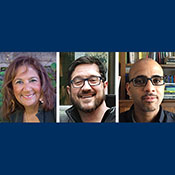 Lolita Hernandez Craig Regester Stephen Ward |
Detroiters Speak: Building Community ClassroomsA keystone of the Semester In Detroit (SID) project, the “Detroiters Speak” series creates a unique public space for dialogue around several contemporary debates through an innovative one-credit course. Classes are public events open to everyone and anyone who might be interested in the semester’s theme. People from in/around the city of Detroit are “community students,” and are joined by U-M students and alumni who live and work in or near Detroit. All materials for the class are posted on a publicly accessible web portal, and the events are recorded and archived for later viewing.… more Poster |
 Stephen Rush Amy Chavasse, Yojairo Lomeli, Andrew Thompson, and Herbert Winful |
Opening Students’ Minds Through Interdisciplinary “Making”“Creative Process” (UARTS 250) is a course that promotes interdisciplinary learning approaches through the lens of four North Campus “making” academic units: Art & Design; Engineering; Architecture & Urban Planning; and Music, Theatre & Dance. Each term a team of five faculty from four different U-M schools works closely with students to illustrate how thinking and working creatively brings greater productivity, accomplishment, meaning, and richness to multiple aspects of life: academic, professional, and personal. Rotating through two-week sessions with different faculty… more Poster |
 Adam Simon Peter Knoop |
Mapping Possibilities for U-M’s Energy IndependenceEARTH 380 “Mineral Resources, Economics, and the Environment” empowers students to understand the technical, social, and financial complexities of radically transforming the electricity infrastructure of our campus. Following a flipped classroom format, students are introduced to a particular energy-related concept and given a problem to investigate each week, using the entire Ann Arbor campus as their primary site of inquiry. The problems are scaffolded such that students have the tools they need and produce data independently. Students submit their results via Canvas prior to a weekly… more Poster |
| Recipient(s) | Title |
|---|---|
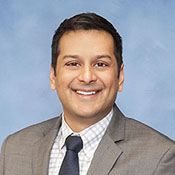 Sapan Ambani |
Making Every Second Count With Spaced Questioning TechnologyTime. Urology surgery residents just don’t have much left for studying—after performing surgery, caring for patients, and advancing research. Worse yet, cramming doesn’t support retention of concepts fundamental to the field (see survey results below). Fortunately, personalized learning technology can a) keep track of what material each student has mastered and b) schedule periodic testing of remaining content. Best of all, spaced questioning can actually increase retention up to two years. Here’s how it works. At any spare moment, residents access a web-based app, answer two daily… more Poster |
 David Chesney |
Developing Software Systems for Children with DisabilitiesCreating opportunities for students to engage deeply with “real-world” problems has long been recognized as a high-impact teaching practice. In EECS 481, the innovation lies in the web of relationships that connect undergraduates in the capstone software engineering course with a child (identified by CS Mott Children’s Hospital) who could benefit from assistive technologies. Students learn about a specific disability selected for the semester from clinical faculty and through interaction with the child and family. After an overview of cutting-edge technologies, each student writes a one-… more Poster |
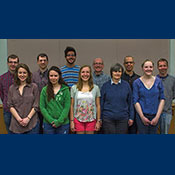 Brian Coppola |
Improving Instruction and Nurturing Future Science EducatorsLaunched in 2014, the Chemical Sciences at the Interface of Education (CSIE|UM) program models a way to institutionalize faculty-led engagement in instructional development throughout a department. Faculty form teaching groups (analogous to research groups) supported by internal funding and the administrative leadership of a new Associate Chair for Educational Development and Practice. In turn, the teaching groups bring together undergraduate students, graduate students, and postdoctoral associates to undertake meaningful projects that also develop their professional skills. Below are… more Poster |
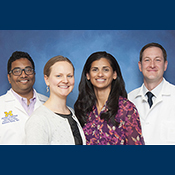 David Hughes Lisa Leininger Rishindra Reddy Susan Ryszawa Gurjit Sandhu |
Debriefing Students’ Clinical Skills With the Minute Feedback SystemWhen cutting into a human body, surgery students and their supervisors appropriately focus their full attention on the patient. Providing high quality feedback on a student’s performance in the moment is understandably a lower priority. But if there is no mechanism for pursuing feedback after the fact, the teachable moment evaporates, impeding learning and frustrating students, administrators, and faculty. Using Qualtrics survey software, the Minute Feedback System makes it quick and easy for students to request feedback on a specific aspect of their clinical care via the web. The… more Poster |
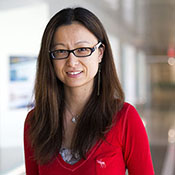 Fei Wen |
Identify-Solve-Broadcast Students’ Own Mass and Heat Transport PhenomenaSupporting students in the production of work that will be valued by real audiences, not just a grader, is a hallmark of innovative teaching. In 2012, Chemical Engineering 342 won a TIP award by challenging students to demonstrate heat and mass transfer principles for visiting high schoolers. In 2014, ChE342 students took demos of heat and mass transfer to the next level by creating YouTube videos, a multimedia assignment. Students respond enthusiastically to meaningful opportunities for autonomy and creativity. Careful scaffolding of the video project process by the instructor can… more Poster |
| Recipient(s) | Title |
|---|---|
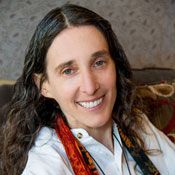 Jill Halpern |
Calculus in the Commons: Bringing Math to LifeWhen students can make meaningful connections to abstract material, they learn more. In Jill Halpern’s project-based sections of U-M’s introductory math sequence, students trek to the Nichols Arboretum to see Fibonacci’s sequence at work in nature. Or they explore the meaning of a difficult concept like halflife through the radiometric dating of dinosaurs in the Museum of Natural History. Beyond providing a realistic context for computations, venturing out of the classroom can engage students both intellectually and emotionally by: increasing understanding, retention, and motivation… more Poster |
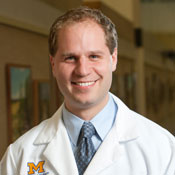 Zachary London |
Teaching Medical Reasoning with EMG WhizA web-based simulator, EMG Whiz challenges medical residents and fellows to plan efficient sequences of electromyography tests in order to diagnose nerve and muscle disorders. Training recommendations call for neurologists and physiatrists to perform and interpret 200 complete electrodiagnostic evaluations during their residencies or fellowships. Although hands-on, clinical experience enables trainees to become adept at making common diagnoses, trainees are unlikely to get enough practice with less commonly seen diseases to be able to identify them with confidence, let alone to do so… more Poster |
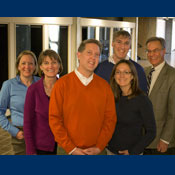 Richard Norton |
Generating Multidisciplinary Synergies Across Community-Engaged CoursesIn U-M’s decentralized academic setting, a huge challenge for community engaged learning is that students and faculty from multiple disciplines sometimes work with the same community without ever being aware of each other’s projects. Changing this dynamic by coordinating across programs is not easy, but the payoffs are profound. When practicums from different schools deliberately focus on a single site, students develop a capacity for collaborating thoughtfully with peers from other disciplines, and communities benefit from better-rounded analyses and proposals. … more Poster |
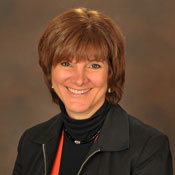 Burgunda Sweet |
Teaching Teamwork and Interprofessional Practice in HealthcareInterprofessional education (IPE) is increasingly viewed by both international health organizations and higher education accreditation bodies as a prerequisite to achieving the “Triple Aim” of improving the patient experience of care, increasing the overall health of communities, and reducing the per capita costs of health care. In response, leaders of five health science schools at U-M agreed in 2014 to jointly prepare their students for such a future by developing a new course, Team-Based Clinical Decision Making. Launched in winter 2015, this course serves more than 250 students from… more Poster |
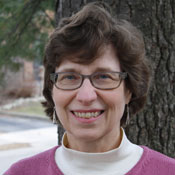 Lisa C. Young |
Re-Connecting Hopi Seeds: Creating Virtual Dialogues With a Source CommunityStudents in the fall 2014 Museum Anthropology course (ANTHRARC 497) enjoyed a unique learning opportunity that thoughtfully integrated physical and virtual research. Specifically, student teams created a digital archive of a U-M museum botanical collection gathered from the Hopi reservation in 1935 and then interviewed (via videoconferencing) contemporary Hopi farmers. Blogging about their progress helped students share their experiences, while also documenting and reflecting on the project. In this video recorded in March 2015 at the Provost's Seminar on Teaching, Unscripted:… more Poster |
| Recipient(s) | Title |
|---|---|
 Davoren Chick |
CaringWithCompassion.org: A Comprehensive Training Portal for Clinicians Serving At-Risk PopulationsAlthough national accreditation standards expect clinicians to be aware of socioeconomic barriers that impact patient care, no national curriculum existed. A local needs assessment revealed that exposing U-M residents to an informal curriculum through training in underserved clinical settings resulted in no significantly improved knowledge of content essential to the care of the homeless and uninsured. To fill this gap, an interprofessional group with members from medical education, nursing, social work, internal medicine, pediatrics, communications, and graphic design developed… more Poster |
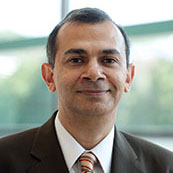 Sherif El-Tawil |
Dancing with Steel Girders: Interacting with 3-D Representations of Buckling Columns in Virtual RealityTraditional methods of teaching structural engineering are static, making it difficult for students to visualize and appreciate how complex spatial arrangements change when subjected to varying circumstances. When 3-D objects are depicted in 2-D spaces like screens, boards, or lecture notes, students have no opportunity to reconfigure the models at will. Even when working with 3-D physical structures in a controlled, laboratory environment, it can be difficult, costly, and dangerous to demonstrate limit states, especially those associated with compression members and connections.… more Poster |
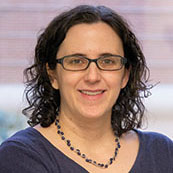 Anne McNeil |
Trailblazing With Wikipedia: Improving Student Learning and Easing ImplementationEditing Wikipedia allows students to transmit the knowledge they are gaining to real-world audiences beyond U-M. However, crafting assignments that promote effective student learning and meaningful collaboration, while also respecting Wikipedia’s rules and style conventions, can present a daunting challenge. Fortunately, instructors no longer have to “go it alone” or “reinvent the wheel,” thanks to the pioneering efforts of Prof. McNeil and her GSIs, who began creating Wikipedia class projects in two graduate level-courses (CHEM 538 and 540) in 2008. After further course… more Poster |
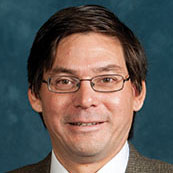 Mark Moldwin |
Doing Science Firsthand Through Dorm-Room LabsIdentifying students’ most common misconceptions is a strategy for focusing interventions that can yield tremendous payoffs in student learning. Dorm-room labs offer a method for moving difficult concepts off the “wrong answer” list. They are particularly valuable in large, introductory science and engineering courses whereby non-majors can fulfill a breadth requirement, yet lack access to fully equipped lab classrooms. Dorm-room labs consist of short activities followed by a few questions and a highly structured lab report. They cover abstract concepts that are less familiar to… more Poster |
 Steve Yalisove |
Dropping Lecture and Summative Exams to Accelerate Deep LearningPicture a section of 60 engineering students working in 12 groups, each with its own whiteboard. Prior to class, everyone has carefully read the assigned text and marked it up with social annotation software developed at MIT. After individuals bring homework solutions to class, each group strives for up to 90 minutes to create a superior, collective response. Almost as much time is then spent analyzing differences between the best solution and one’s initial effort: distinguishing conceptual from procedural errors, rating overall understanding, listing areas that need review, and assessing… more Poster |
| Recipient(s) | Title |
|---|---|
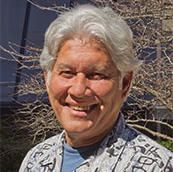 Antonio (Tony) Alvarez |
The Stick Project: To Transform and To Be TransformedHow can instructors address the limits of teaching practice- oriented material within the confines of a classroom? How can learners directly experience topics being taught in order to develop rich understandings of abstract and amorphous concepts? In social work, it is particularly challenging to convey to students the process of personal transformation for clients seeking change in one or more aspects of their lives, and to further address the responsibility inherent in guiding another. Not only must practitioners be able to build effective relationships with clients, but they… more Poster |
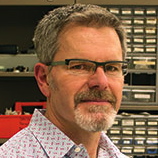 Brent Gillespie |
Feeling Is Believing: Haptic Feedback Links Math and IntuitionStudents may be capable of manipulating mathematical models of physical systems in the abstract, yet lack intuitive understanding of how changes in system variables will manifest physically. The Cigar Box is a tool that makes the same behavior that is being described mathematically accessible to students’ haptic senses of touch and motion. It turns code into virtual environments that can be touched and manipulated, much like the real world objects to which they refer. Best of all, model parameters can be changed on the fly as students interactively explore dynamic systems. … more Poster |
 Mika LaVaque-Manty |
Gamifying a Large, Introductory Course and Fostering Student Autonomy“Gamification” is the application of structures, rules, and logics encountered in games to non-game contexts. Gamifying a course doesn’t consist of just converting conventional grades to points. Rather, the logic of rewards must be pervasively changed. Conventional reward systems “mark students down,” discouraging them from a crucial part of learning: failing and trying again. However, when students focus on “leveling up” and earning points, they are motivated to do more work and to take on new challenges. When students aren’t penalized for unsuccessful efforts, the only cost is their time… more Poster |
 Michael Hortsch |
SecondLook (or if Socrates taught with an iPad): Helping Students Evaluate Their LearningSecondLook is a study aid that lets learners self-test their ability to recognize visual structures and interpret their significance. Originally developed in PowerPoint and disseminated via a Medical School website, the resource became available through the iTunes Store in November 2012. Over the first three months it was downloaded 1,438 times across 74 different countries. This teaching innovation is particularly relevant to any discipline that introduces students to daunting amounts of visual material. For example, studying the microscopic structure of tissues constitutes an… more Poster |
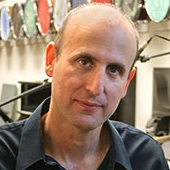 Michael Gould |
The Drum Diaries: Inspiring and Integrating Exploration and PracticeThe Drum Diaries project fulfills a 30-year wish for a single technological device capable of providing instant access to vast collections of audio and visual music recordings. Digital tablets now offer opportunities to surpass the predominant format typically available to new players of instruments--a method book plus a CD (which often gets lost and thus goes unheard). Instead, with the Drum Diaries iBook loaded onto an iPad propped on a music stand, a student can quickly switch from reading, seeing and/or hearing to playing along, imitating, or creatively improvising. Music… more Poster |
| Recipient(s) | Title |
|---|---|
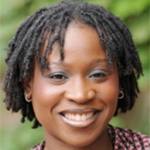 Lola Eniola-Adefeso |
Experiencing "True Engineering" Earlier: Learning Concepts by Teaching to High School StudentsInviting Ypsilanti 10th graders to serve as an audience for “science fair-style” presentations by undergraduate engineering teams is a multi-faceted innovation. Beyond motivating individual undergraduates to learn concepts more thoroughly as they figure out how to teach them, the format supports STEM retention in several ways. First, putting the onus on undergraduates to creatively link real-world applications to chemical engineering principles increases interest and excitement. This matters because STEM attrition increases when students feel bored or don’t see the relevance… more Poster |
 Tim McKay David Gerdes August Evrard |
Better Than Expected: Using Tailored Communication to Optimize LearningE²Coach takes the form of a highly personalized website that delivers complex feedback and encouragement. Advice is tailored to the student’s background, current standing, and progress over the course of the semester, and is also sensitive to the student’s ambitions and identity (elicited by survey at the course’s outset). Final grades can be predicted quite well for students embarking upon introductory physics courses due to a 2008 learning analytics project with data on nearly 50,000 U-M students. Of course, some students do better than expected, others worse. Knowing… more Poster |
 Joanna Mirecki Millunchick |
High Return on Faculty Investment: Addressing Diverse Student Needs in Large Lectures Through ScreencastingScreencasting has previously been featured in projects receiving the Provost’s Teaching Innovation Prize. The innovativeness of this particular project lies in its integration of sound research on learning outcomes from the very outset. Students from different engineering majors have comparable academic indicators upon entering MSE 220, a large introductory materials science and engineering course. However, their prior exposure to the course material varies widely. Whereas the core curricula for aerospace and chemical engineering majors include MSE-related topics, there is little… more Poster |
 Kathleen Sienko |
Co-Creative, Immersion-Based Design for Global HealthChallenging undergraduates to design medical equipment for use in limited-resource settings requires long-range vision and significant scaffolding. The innovativeness of this initiative is not tied to a specific class but rather lies in a sequence of experiences that has yielded a remarkable payoff. High quality design projects have led to conference presentations, an article in the Journal of Medical Devices, patent applications, and a spin-off social venture. Initially, U-M’s Global Intercultural Experience for Undergraduates (GIEU) program provided a framework for developing… more Poster |
 Theresa Tinkle |
Teaching Smarter Not Harder: Improving Students' Close Reading Skills Through InteractivityThree innovations stand out in this re-invention of English 350, a survey of literature before 1660. First, instead of prioritizing highly specialized knowledge of cultural contexts, the instructional team prioritized undergraduates’ development of close reading skills. Second, the usual order of things in a large lecture course was reversed in that students spent more time performing close readings themselves, and less time merely observing instructors’ demonstrations of the skills. Third, the introduction of technologies less commonly used in the humanities made it possible for… more Poster |
| Recipient(s) | Title |
|---|---|
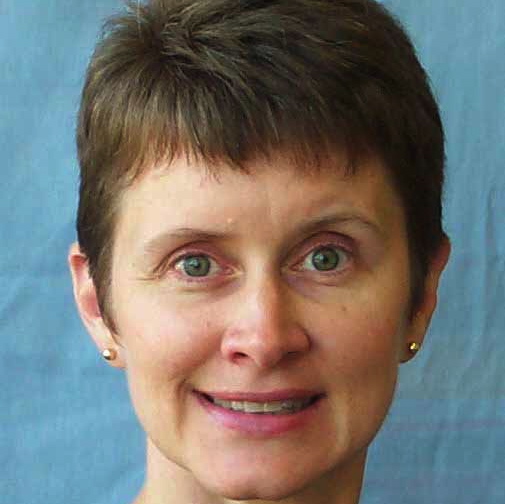 Brenda Gunderson |
Infusing Technology for Guided Continuous Learning in a Large Gateway CourseBy carefully selecting and interweaving technologies, instructors can guide large groups of students through challenging material in a way that feels highly personalized. The 1,500 students who enroll in Statistics 250 each semester eagerly engage with a suite of technologies that gives them multiple paths for developing, practicing, and testing their understanding of concepts and relationships. SMART Presentation Tools: A tablet PC allows the instructor to make the problem solving process transparent and guide students to see connections to earlier material. Lecture Capture… more Poster |
 Brian Coppola Joseph Krajcik Mary Starr |
Securing Our FUTURE: Foundations for Undergraduate Teaching - Uniting Research and EducationThis program fosters collaboration between first- and second-year undergraduates in LSA gateway science and mathematics courses with local middle and high school teachers. FUTURE gives undeclared undergraduates the chance to design and implement a lesson in an authentic classroom setting, leading many to consider a career in teaching. Two to three U-M students are matched with an in-service teachers who propose lesson ideas that they’ve previously lacked the resources to carry out. The U-M students visit their host’s classroom and enroll in the FUTURE seminar, which covers… more Poster |
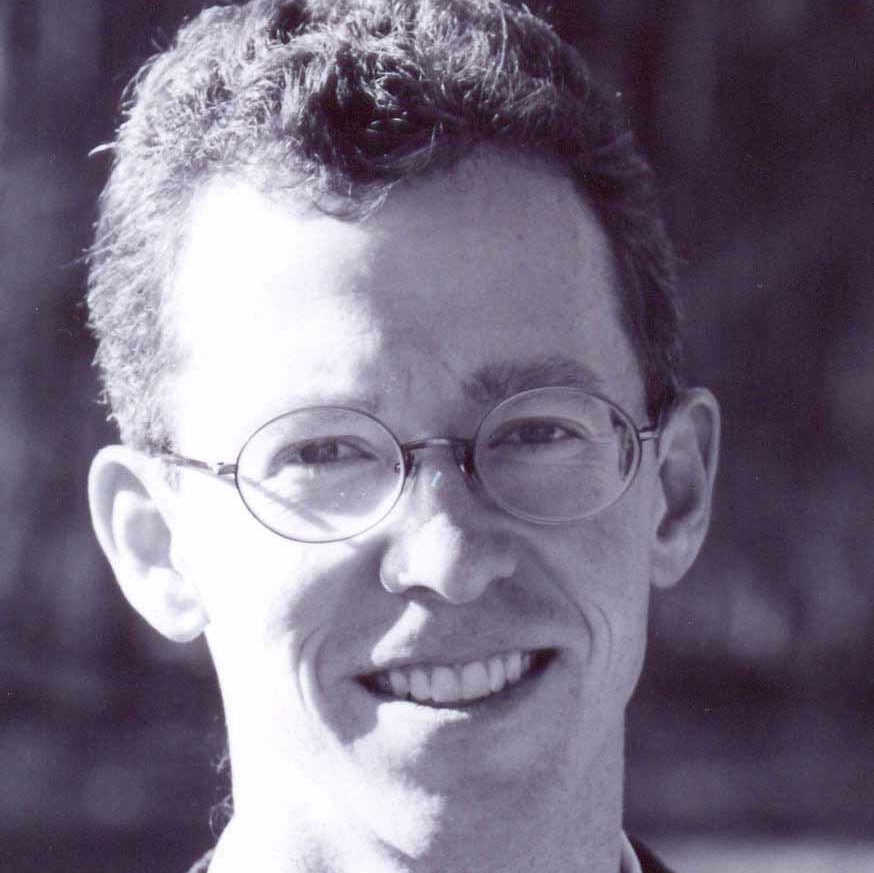 Douglas Northrop |
ZOOM: Teaching Time, Space, and Approaches to Knowledge“Zoom” is a course in “Big History.” It moves through a range of disciplinary perspectives (astronomy, geology, biology, anthropology, etc.) to tell the universe’s story from the Big Bang to the end of time. This approach covers 13.7 billion years and puts human history into terrestrial and cosmic contexts. The primary, semester-long assignment engages students in thinking directly about how materials presented by guest lecturers from different disciplines relate to one another. Students form groups centered around a particular discipline and then create a set of wiki pages profiling… more Poster |
 Susan Ashford |
The Leadership Crisis Challenge (LCC): Forging Courage, Judgment, and IntegrityThe LCC simulation forces students to make decisions under acute time pressure and to trade off competing demands, thereby addressing the difficulty of teaching these key elements of leadership. Intangibles such as judgment, courage, and integrity are hard to meaningfully broach with traditional teaching methods. However, leaving these skills to be learned in the field has costly financial, social, and career consequences. The intensive exercise runs 24 hours and presents a realistic business crisis that poses vexing questions: What does a company “owe” the community in which it… more Poster |




